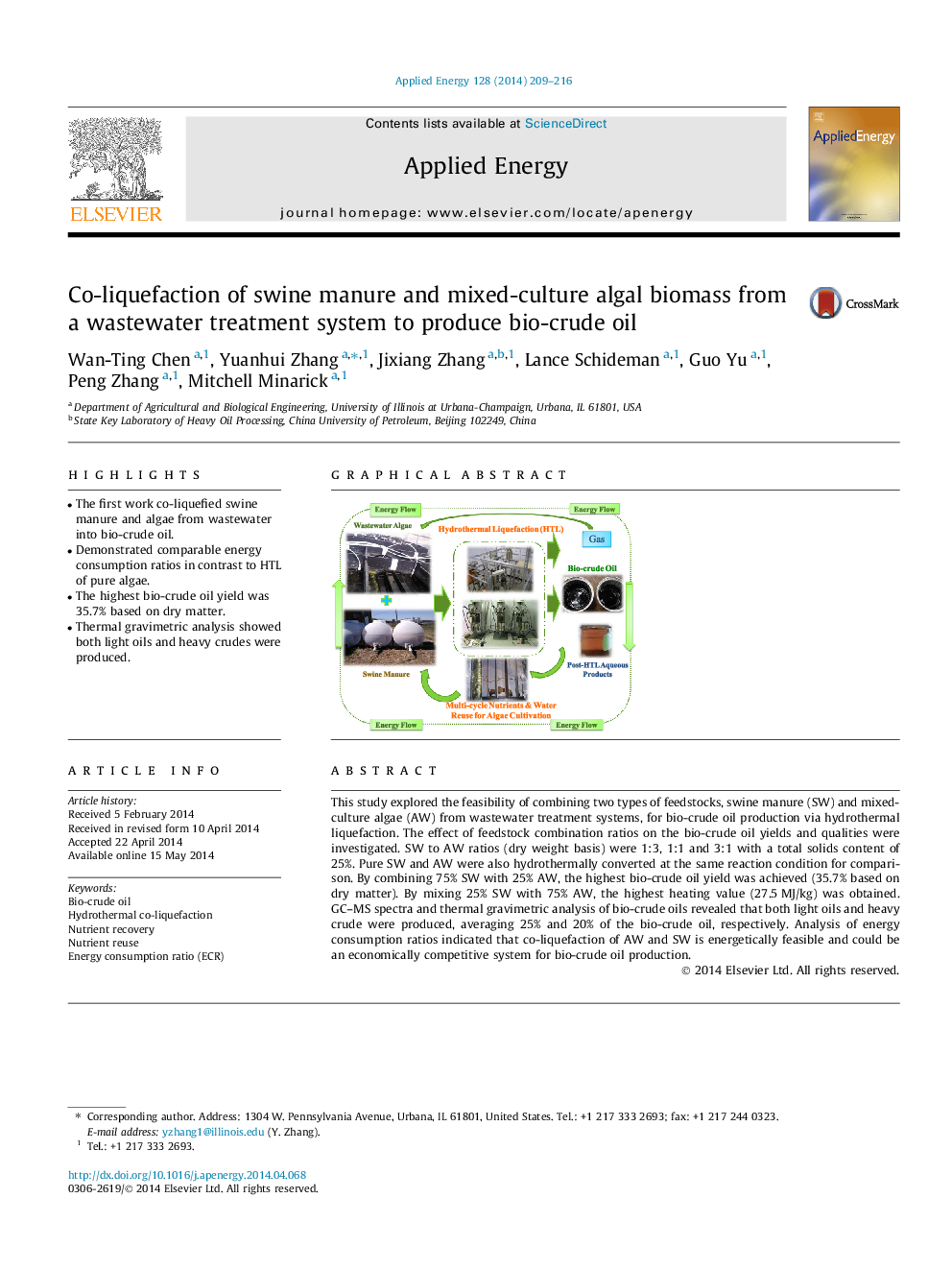| Article ID | Journal | Published Year | Pages | File Type |
|---|---|---|---|---|
| 242678 | Applied Energy | 2014 | 8 Pages |
•The first work co-liquefied swine manure and algae from wastewater into bio-crude oil.•Demonstrated comparable energy consumption ratios in contrast to HTL of pure algae.•The highest bio-crude oil yield was 35.7% based on dry matter.•Thermal gravimetric analysis showed both light oils and heavy crudes were produced.
This study explored the feasibility of combining two types of feedstocks, swine manure (SW) and mixed-culture algae (AW) from wastewater treatment systems, for bio-crude oil production via hydrothermal liquefaction. The effect of feedstock combination ratios on the bio-crude oil yields and qualities were investigated. SW to AW ratios (dry weight basis) were 1:3, 1:1 and 3:1 with a total solids content of 25%. Pure SW and AW were also hydrothermally converted at the same reaction condition for comparison. By combining 75% SW with 25% AW, the highest bio-crude oil yield was achieved (35.7% based on dry matter). By mixing 25% SW with 75% AW, the highest heating value (27.5 MJ/kg) was obtained. GC–MS spectra and thermal gravimetric analysis of bio-crude oils revealed that both light oils and heavy crude were produced, averaging 25% and 20% of the bio-crude oil, respectively. Analysis of energy consumption ratios indicated that co-liquefaction of AW and SW is energetically feasible and could be an economically competitive system for bio-crude oil production.
Graphical abstractFigure optionsDownload full-size imageDownload as PowerPoint slide
